PuTTY Installation
|
More information about Real Time's products & services is available on our sales web site. Direct links for each item are listed below:

|
PuTTY is a free Win32 telnet/ssh client
Definitions
- SSH - Secure SHell protocol. Like the old 'telnet' program, it allows you to get a command-line on a remote host; but it encrypts the traffic so no one can intercept your password or any other sensitive data.
- Host - A computer which is connected to a network, hosts a service of some sort, to which you connect.
- Dialog - A window asking you for input. A way to carry on a dialog with the computer.
Installation & Configuration
-
First, download the PuTTY executable from the website at http://www.chiark.greenend.org.uk/~sgtatham/putty/download.html
Alternatively, you can follow this direct link to http://the.earth.li/~sgtatham/putty/latest/x86/putty.exe 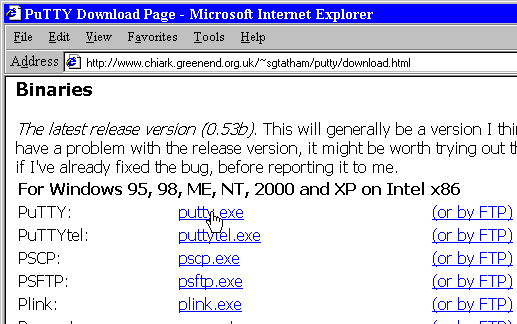
-
Click on Save 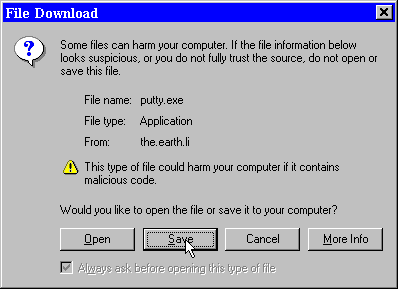
-
One good place to save the file, would be a special SSH directory. So let's create one. Navigate to C:\, then create a directory called ssh 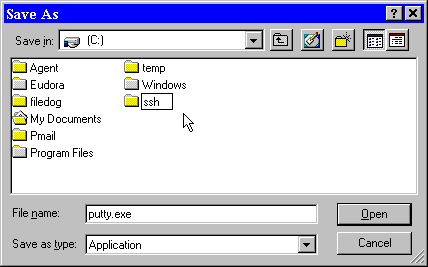
-
Open the ssh directory, and Save the putty.exe file there 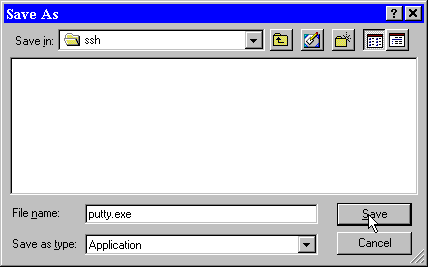
-
To launch PuTTY, go to Start->Run, then type C:\ssh\putty.exe and click the OK button 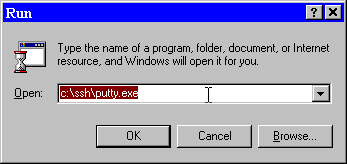
- When the PuTTY Configuration window appears:
- Enter the Host Name (or IP address) of the host you wish to connect to (in this case we used 'host.example.com'; but of course you should substitute this with the hostname of the machine you want to connect to)
- Click on the SSH radio button
- Type a name for the session in the first field under the Saved Sessions section (in this case we used 'example')
- Click on the Save button to save this information for future sessions.
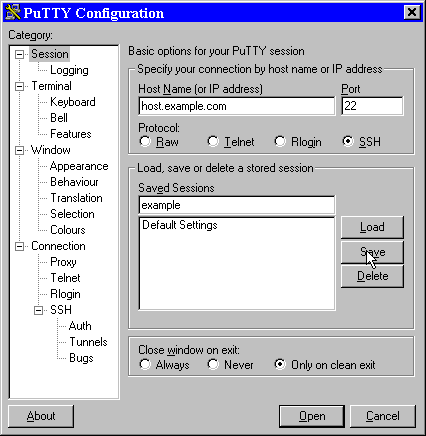
-
Click on the Open button down at the bottom of this dialog box to start the ssh session 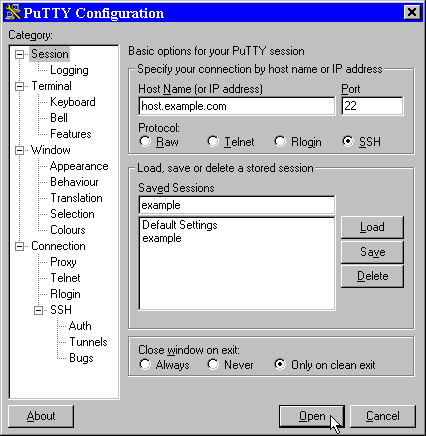
-
A black window will appear, with the following dialog. If you've never connected to this host before, click on Yes 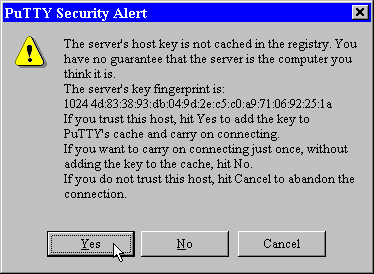
-
PuTTY will then prompt you for a username
- Enter your username (In this case, we're using 'example' as the username; refer to your Welcome Letter for your username/login)
- Hit Enter
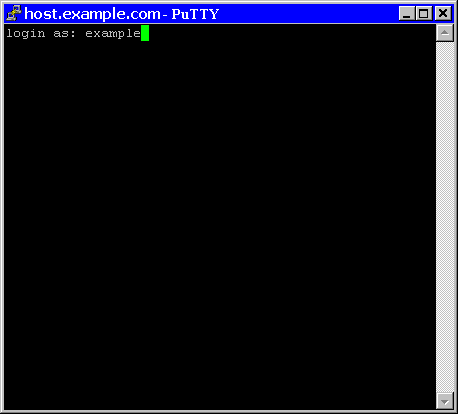
- Upon entering a username and hitting the Enter key, you will then be prompted for a password
- Enter in the password associated with your username/login (refer to your Welcome Letter for your password)
NOTE: Characters entered will not be echoed back to the screen, so you won't see anything you type in
- Hit Enter
NOTE:
You will then be connected and should get a shell prompt. If not, make sure you have entered the username/login and password correctly. If the problem persists, contact the administrator of the machine you are connecting to; it's a problem on the server side
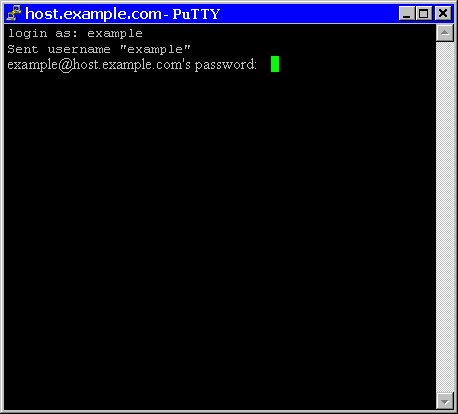
The instructions and screen shots contained within this website are specific to services offered by Real Time Enterprises only.
Permission is granted to copy, distribute and/or modify this
document under the terms of the GNU Free Documentation License,
Version 1.1 or any later version published by the Free Software
Foundation; with no Invariant Sections, no Front-Cover Texts and
no Back-Cover Texts. A copy of the license is included in the
section entitled "GNU Free Documentation License".
|
|












